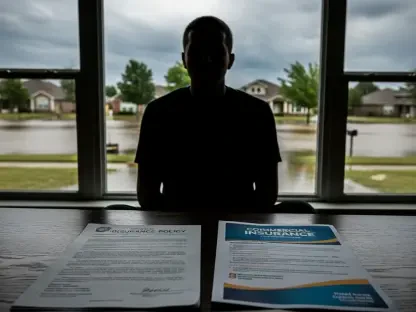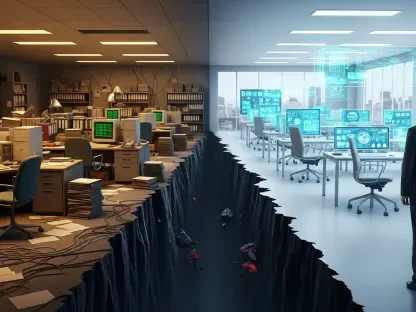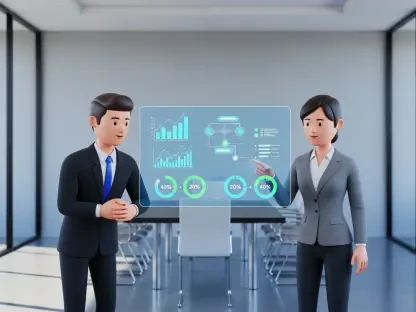I’m thrilled to sit down with Simon Glairy, a renowned expert in insurance and Insurtech, with a deep focus on risk management and AI-driven risk assessment. With years of experience in navigating the complexities of the insurance industry, Simon offers invaluable insights into how technology is transforming marine insurance. Today, we’ll dive into the evolving landscape of cargo insurance operations, the impact of innovative platforms on efficiency and client service, and the role of digital solutions in driving global expansion for insurers. Join us as we explore how cutting-edge tools are reshaping the way marine insurers operate and grow in an increasingly competitive market.
Can you walk us through the key reasons behind adopting advanced technology platforms for cargo insurance operations?
Absolutely. The marine insurance sector has always faced challenges like manual processes, fragmented data, and the need to manage complex risks across global markets. Adopting advanced technology platforms is often driven by the need to overcome inefficiencies, reduce errors in tasks like policy configuration or shipment validation, and ultimately scale operations. It’s about creating a backbone that can handle high volumes of transactions while maintaining accuracy and speed, especially for insurers looking to serve clients in multiple countries.
How do these modern solutions enhance day-to-day operations for marine insurers?
These platforms bring a lot to the table. For one, they centralize visibility into critical areas like shipments and certificates, which makes tracking and managing policies much easier. They also streamline workflows—think faster referral processes and less time spent on repetitive tasks. This means teams can focus on strategic priorities, like client relationships, rather than getting bogged down in paperwork or manual data entry.
What kind of impact do you see from automating processes like rating, quoting, and binding in the cargo insurance space?
Automation is a game-changer. It eliminates a lot of the grunt work—tasks like manually calculating rates or drafting quotes—that used to take hours or even days. By automating these, insurers can turn around offers much faster, which is a huge plus for clients who expect quick responses. It also reduces human error, ensuring more consistency in pricing and terms, and frees up staff to tackle more complex issues or provide personalized service.
In what ways can technology help insurers cut through operational complexity and speed up their processes?
Technology tackles complexity by simplifying workflows and integrating disparate systems. For instance, many insurers deal with outdated systems that don’t talk to each other, leading to delays and frustration. Modern platforms can connect internal and external systems seamlessly, so data flows without hiccups. This cuts down processing times significantly—sometimes from days to just hours—whether it’s validating a shipment or issuing a certificate. It’s all about creating a smoother, faster operation.
How do these platforms support the goal of expanding a cargo insurance business on a global scale?
When you’re operating in dozens or even hundreds of countries, consistency and adaptability are key. These platforms often come with features that handle multi-currency transactions, comply with local regulations, and support diverse client needs. They make it easier to manage policies across borders without needing separate systems for each region. This scalability is crucial for insurers aiming to grow their footprint and serve larger multinational clients or brokers worldwide.
What improvements do digital tools bring to the client experience in marine insurance?
Clients today expect convenience and transparency, and digital tools deliver just that. User-friendly interfaces allow them to manage shipments or access certificates with ease, often in real time. Plus, the integration capabilities of these platforms mean clients don’t have to deal with clunky processes or wait for updates—everything is connected and accessible. This creates a seamless experience, builds trust, and often leads to higher satisfaction and retention.
Can you share some insights on the challenges and successes of implementing new technology in a traditional industry like marine insurance?
Implementation can be tricky in an industry with deep-rooted practices. One common challenge is resistance to change—teams are often comfortable with legacy systems, even if they’re inefficient. There’s also the hurdle of integrating new tech with old infrastructure, which can take time and resources. However, the successes are worth it. Once implemented, you see quicker turnaround times, happier clients, and teams that can focus on value-added tasks. The key is strong training and clear communication about the benefits during the rollout.
What is your forecast for the future of technology in marine insurance over the next decade?
I believe we’re just scratching the surface. Over the next decade, I expect to see even deeper integration of AI and machine learning for risk assessment and predictive analytics, helping insurers anticipate issues before they arise. Blockchain could play a bigger role in securing transactions and verifying shipments, while IoT devices might provide real-time data on cargo conditions. Overall, the focus will be on hyper-personalized services and even greater efficiency, making marine insurance more proactive and client-centric than ever before.









